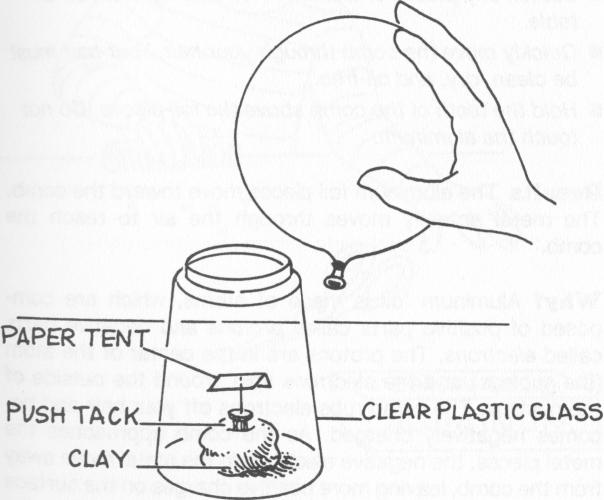| Previous | Index | Next |
Purpose To demonstrate the force of attraction between charged particles.
Materials modeling clay
push tack
tissue paper
scissors
clear plastic glass
balloon, small enough to hold in your hand ruler
Procedure
Roll a dime-sized piece of clay into a ball and press it onto a table.
Push the end of the push tack into the clay, leaving the point sticking up.
Cut a 1-in. (2.5-cm) square from the tissue paper.
Fold the paper in half to form a tent.
Balance the paper tent on top of the pin point.
Position the plastic glass over the pin and paper tent.
Inflate the balloon to a size that is easily held in your
hand.
Charge the balloon by rubbing it on your hair about 10
times. Your hair must be clean, dry, and oil-free.
Hold the charged balloon near, but not touching, the
plastic glass.
Watch the paper tent for any movement.
Results The paper tent turns and falls off of the tip of the tack.
Why? The paper tent, balloon, and hair are all examples of matter, and all matter is made of atoms. Atoms have positively charged protons in their center (the nucleus) and negatively charged electrons spinning around the nucleus. The balloon becomes negatively charged on the side that is rubbed on the hair because the electrons are rubbed off the hair and collect on the balloon. The negatively charged balloon attracts the positive part of the paper tent. This attraction is strong enough to pull the paper off the tack.
22
23

| Previous | Index | Next |